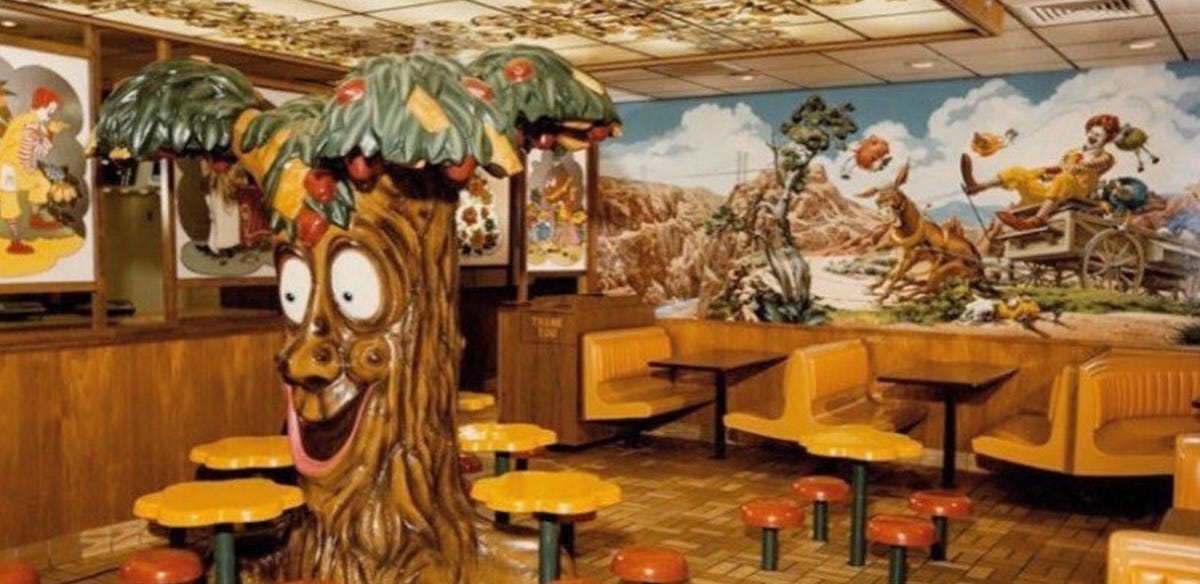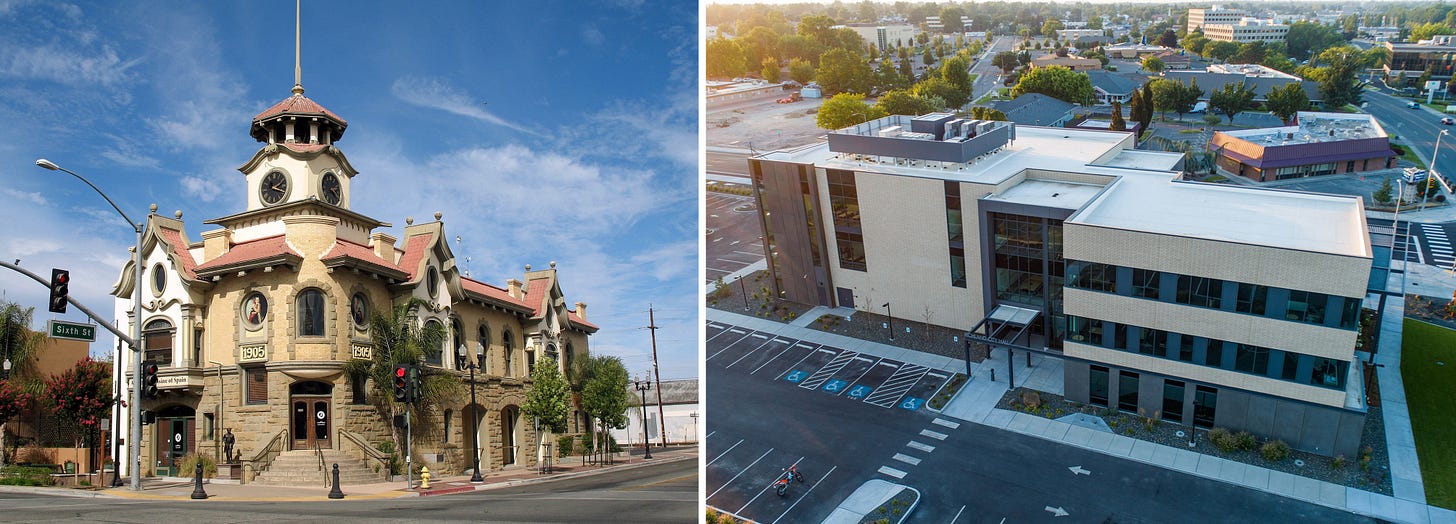We're making cities boring
Optimizing for efficiency got us sameness and undifferentiation
Recently Sheehan Quirke (better known as
) posted his first video in a study of why, in modern cities, we’ve decided to make them sterile, boring, flat. You see examples of his point all over the place: mass-produced-looking apartment buildings, fast food establishments, and public spaces. Buildings that look like they were designed in a clean room and transported to a piece of property. Buildings that have that plain, placeless look, undifferentiated from their surroundings, and absolutely untethered from the vernacular of the local culture. Even simple street furniture and amenities look less interesting than they used to.Office and residential buildings are among the worst offenders, if for no other reason than their prominence and visibility. A condo highrise goes up, cutting an utterly uninteresting profile (but beautiful units start as low as $800K!). Or that new 4-over-1 office space that could be dropped just as easily into London or Albuquerque.
This flattening of everything — architecture, design, cultural distinctiveness, etc. — creates environments with no humanness about them. Shorn of texture and local reference, it’s like we’re making things in a lab for the lowest possible cost, built to be cookie-cuttered and stamped out anywhere. We’re designing for spreadsheets and planners, not people.
Walk into a new McDonald’s location or any modern fast-casual restaurant and you’ll see the effect. Our spaces didn’t use to feel like this.
This was a typical McDonald’s in the 1980s. Sure, it’s tacky and over the top, but it used to be a place catering to kids. You could have your birthday party there. The aesthetic might not be your cup of tea, but you’ve got to admit it had an opinion. There’s life and purpose. There’s an evocation of feeling.
This is what they look like now. The sense of purpose vanished. I’m not even sure what this aesthetic is intended to make me feel. Perhaps that’s the point: pure utilitarianism, no adornments, all function. Not only is there zero life in the place, but they’ve even optimized away all human interaction, period. Just punch the buttons to order from the Machine.
One looks like it’s designed for humans — human children, in fact! The other, who knows... Automatons? Tesla Optimii? No interestingness anywhere, colorless, emotionless.
This deficiency of life is something Christopher Alexander devoted an entire series of books to.
I ran across this relevant passage of his yesterday in A Pattern Language. This is an excerpt from 95: Building Complex, where Alexander is contrasting the feel of “monolithic” buildings with smaller clusters of human-scale structures:
In the monoliths, the visitors’ experience is depersonalized. They stop thinking primarily of the people they are going to see and the quality of the relationship and focus instead on the building itself and its features. The staff become “personnel,” interchangeable, and indifferent, and the visitors pay little attention to them as people — friendly or unfriendly, competent or incompetent.
We’ve all felt what he’s describing here, where smaller buildings (or sections of buildings) can narrowcast to a particular purpose. But modernity pushes for centralization and aggregation. The “interchangeability” he calls out with respect to the people is evident throughout the whole thing. The staff feel like they’re just numbers filling spreadsheet cells. All in the name of efficiency.
Alexander goes on to describe how in studies, visitors to these buildings struggle to even describe their anxiety about the soulless monoliths (emphasis mine):
We learn also from this study that in the large buildings visitors complained frequently about the “general atmosphere” of the building, without naming specific problems. There were no such complaints among the visitors to the smaller buildings. It is as if the monoliths induce a kind of free-floating anxiety in people: the environment “feels wrong,” but it is hard to give a reason. It may be that the cause of the uneasiness is so simple — the place is too big, it is difficult to grasp, the people are like bees in a hive — the people are embarrassed to say it outright. (”If it is as simple as that, I must be wrong — after all, there are so many of these buildings.”)
In today’s parlance, we might say a place has “bad vibes.” When we rip the human elements out of our everyday experiences, we become unmoored, in a way. We can’t even immediately describe what’s wrong, but it’s a general disorientation. Something’s missing.
The size of a building is only one aspect, but it points directionally toward a general homogenization. When you jam all functions together under one roof, the result is an atomized average that can do anything, but doesn’t do anything well.
Consolidating functions and cutting away the adornments surely lowers the cost, but also removes the pleasure of walking through a space. And because “pleasure” is hard to make legible in the financial models, we ditch it as valueless. The logic of efficiency prefers the universal to the particular. It’s cheaper to build for everywhere the same than to build for somewhere specific.
Maybe there’s a market demand for this kind of thing. There’s certainly a demand for lower costs in general, particularly in the mundanities of the everyday. In our stops for fast food or our trips to the supermarket, we’re typically more interested in cost-effectiveness than some spiritual experience.
Everything doesn’t have to look like a cathedral or Monticello, though. If we went out of our way to make everything neoclassical, that would begin to grow stale. There’s room for some things to be boring. I don’t need every gas pump to have marble sculptures on top.
Yet what’s bothersome is the feeling that we’ve gone over the guardrail in pursuit of efficiency at all costs. We flattened the world in a hunt for lower prices, and didn’t know that we were signing up for these sterile surroundings.





